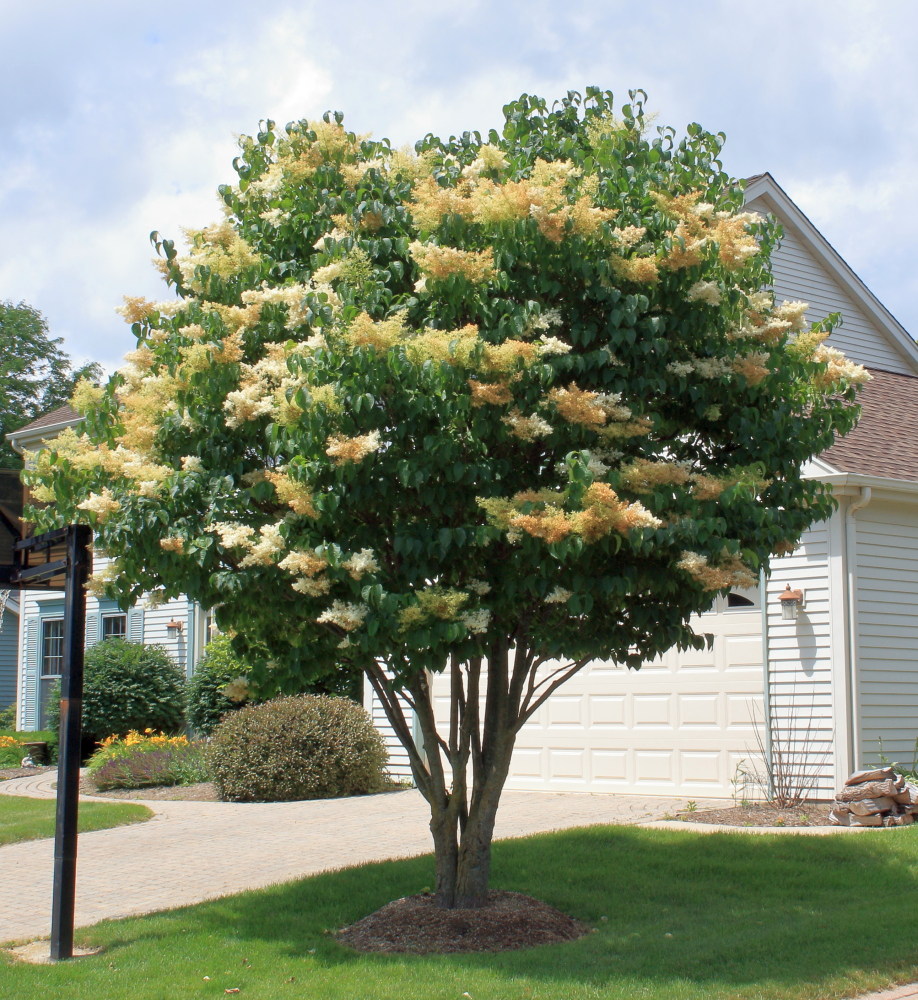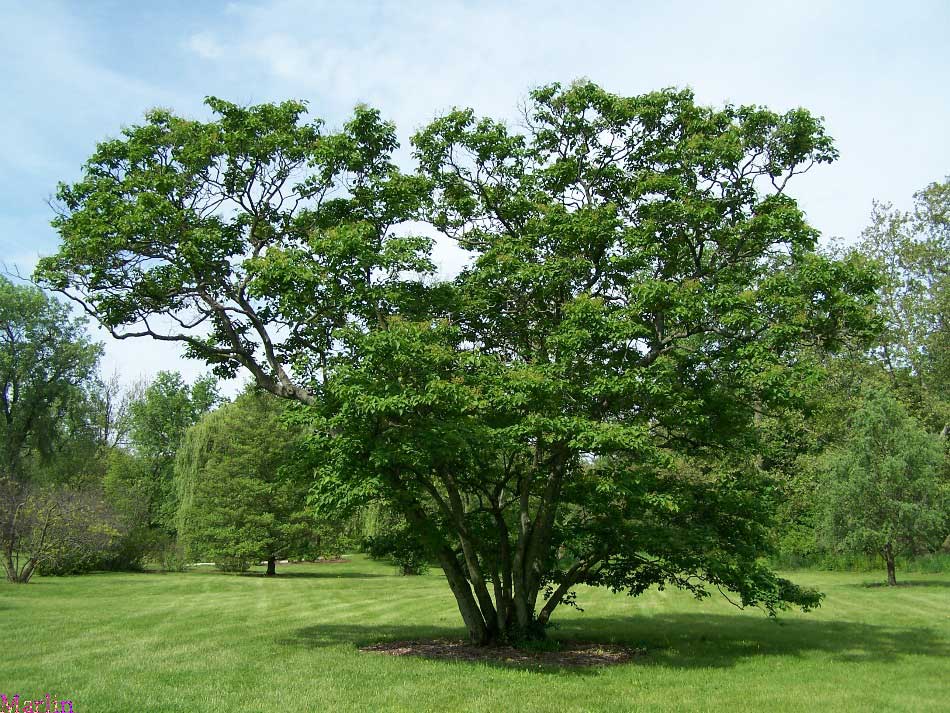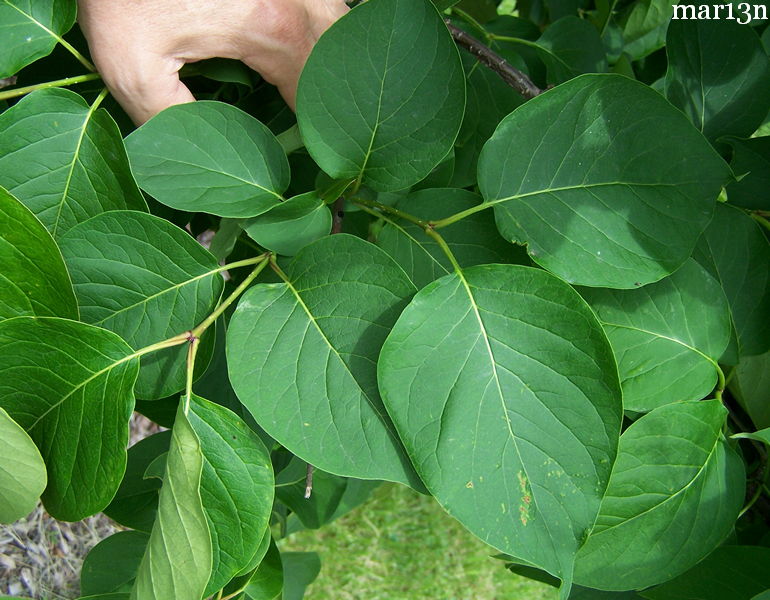Japanese Tree Lilac – Syringa reticulata
 Tree lilac makes an excellent small ornamental tree for house and garden
Tree lilac makes an excellent small ornamental tree for house and garden
Family Oleaceae – Olive, Ash, Lilac, Privet
Cultivars of the Japanese tree lilac include ‘Ivory Silk’ and ‘Summer Snow.’ ‘Summer Snow’ is spectacular in flower and the persistent seed pods add ornamental interest into the fall. Grows to 30 feet with up to 25-foot-spread. Although the clusters of creamy white flowers, borne in early summer for about two weeks, can be spectacular, they lack the lovely, eponymous fragrance of the spring-blooming lilacs.
This outstanding Morton Arboretum specimen (above) is one of the original plantings from the time of Joy Morton’s founding in 1922.
Japanese tree lilac makes an excellent specimen tree for smaller yards, since it does not usually interfere with power lines or other overhead obstructions, and its spread and open habit do not cast such dense shade as to kill the grass. JT lilac is being used as a street tree in some parts of the country, and it’s also popular as an accent in a shrub border, with a colorful spring show for a deck or patio. [2]
The tree is sold as a multi-stemmed specimen or as a single-trunked street tree. The trunk is often trained fairly straight to 10 feet and then it branches into a stiff, upright, rounded head of foliage. As with other Lilacs, the plant as a shrub may need rejuvenation by pruning every few years as it becomes overgrown. It is perhaps the most pest-resistant Lilac, but that does not mean it is pest-free. Regular irrigation during dry spells help make this a pest-resistant tree.
Pests. Lilac borers can severely affect trees in certain areas. Lilac borer larvae tunnel in the branches, causing wilting, particularly on drought-stressed trees. Severely infested branches may break off. Lilac leaf miners tunnel in the leaves in early summer. After mining the leaf, the caterpillars emerge and spin silken webs holding leaves together, then skeletonize the foliage.
Diseases. Although usually free of serious disease, bacterial blight is most serious on white-flowered varieties. The young shoots develop black stripes or one side of the shoot turns black. Spots develop on the leaves, forming a water-soaked blotch. Young leaves turn black and die quickly. On older shoots, the spots enlarge more slowly. The flowers wilt and darken. The disease is worse when wet weather occurs as the new shoots are developing. Thin plants to increase air circulation. Remove and destroy diseased shoots and avoid excessive nitrogen fertilizer. Phytophthora blight kills stems to the ground. The leaves turn black and shoots have brown lesions on them. [2]
Family Oleaceae – Olive, Ash, Lilac and Privet The olive family contains 25 genera and over 500 species of flowering plants. Most species are native to temperate and tropical regions of the Northern Hemisphere. The best known of this family are olive, ash, privet, lilac, and Forsythia.
Family Rosaceae – Rose Family; Fruit Trees
Trees Index | Pine Family | Beech, Oak | Nut Trees | Birch Family | Magnolias
Tree Encyclopedia / North American Insects & Spiders is dedicated to providing family-friendly educational
resources for our friends around the world through large images and macro photographs of flora and fauna.


